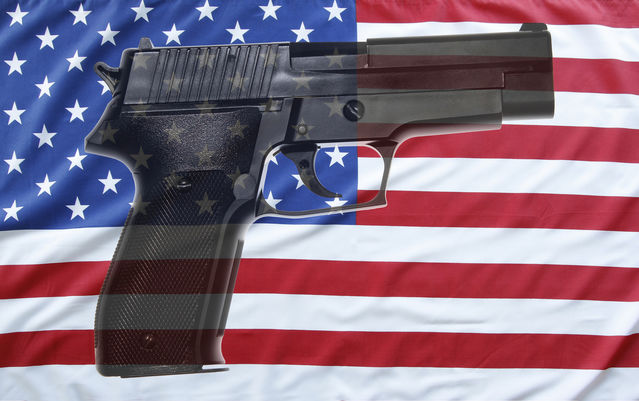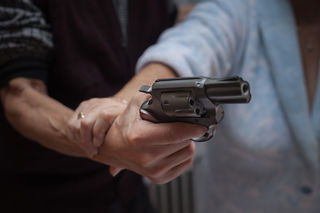Health
We Live in a Culture of Violence
Violence is a social and political problem, as well as a personal one.
Posted January 31, 2018 Reviewed by Devon Frye

It’s hard to believe the idea that every time another mass shooting happens, nothing could've been done to prevent it. Tragically, it seems that mass shootings will continue to occur, be it a result of international terrorism or through the hands of a neighbor. Although the aggressor or aggressors may feel anger toward a specific group of people, their victims often include those outside that particular group.
An Everytown for Gun Safety analysis of data from 2009 to 2016, collected from the Center for Disease Control and Prevention (CDC), National Vital Statistics System, and the Federal Bureau of Investigation (FBI)’s Supplementary Homicide Reports (SHR), reveals many disturbing facts.

It found that in mass shootings—in which “mass shooting” is defined as a situation in which at least four people are killed with guns—54 percent were committed by intimate partners or family. In other words, domestic violence plays a pivotal role in over half of the cases.
The United States is the country with the most arms per capita. Four out of seven people live in a home with a gun. Approximately 97,820 people are wounded yearly as a result of a firearm—268 a day. It was also found that, between 2012 and 2016, there were around 35,000 gun-related deaths: 21,600 were suicides and 12,800 were homicides.
This data, however, does not elucidate the causes of violence. It does not answer questions regarding the mental health of those who attack others, or how access to firearms in a society that has enculturated violence may have played a part.
Many people in the U.S. feel that guns are necessary for security. Yet some countries, such as Japan, have adopted many very strict gun-control laws without consequence. In Japan, citizens are only allowed to purchase shotguns and air rifles after attending an all-day class, taking a written examination, and passing a shooting-range test with a mark of at least 95 percent. A background check—which includes mental health screenings, drug use history, and interviews of relatives and/or colleagues—is also completed. Guns are inspected once a year. After three years, those seeking to renew their gun licenses undergo the same rigorous process. In Japan, fatalities are approximately 10 for a population of 128 million. Australia was also able to reduce its gun violence problem by 40 percent when it implemented a program against the use of firearms in 1996.
Why is it that the United States cannot do something similar, especially given that it’s confirmed that in countries in which there are more gun-control laws, there are fewer gun-related fatalities? It’s a complex problem.
For starters, the gun industry generates billions of dollars of overseas revenue for the country. In addition, the United States has a history of military activity throughout the world. Many researchers and scholars argue that we live in a culture of violence, where weapons are a symbol of power.
Guns without users are harmless. It is easy to say that it is not the gun that commits the crime, but the person who pulls the trigger. Many believe, then, that gun violence is a question of mental health.

There is also the question of gender. Why do men engage in gun violence more often than women? Some believe it may be due to early socialization and education. Perhaps we could institute school-based educational plans that teach kids how to resolve conflicts.
If we add in the fact that we live in a society that tends to value and glamorize violence, in which many children and youth are exposed to violence on a daily basis via television, social media, and video games, some would argue that we can’t expect much to change. By the time a child becomes an adult, most of them will have already witnessed hundreds or even thousands of acts of violence on television. It's possible that early exposure to media violence numbs children to it or legitimizes it as a means to solve problems, though researchers are divided on this front. It's possible, though, that some children may imitate what they see on television or identify with characters who commit (or are victims of) violence.
As with all other problems of a complex society, the answer to mass shootings is not an easy one. The U.S. does offer many beneficial treatment programs, but navigating through them is sometimes difficult. A person who suffers from a mental illness does not always have the necessary resources to maintain a healthier lifestyle. In many cases, outside actors cannot intervene in their care unless they give consent.
The most common profile of those who commit mass violence seems to be a reclusive white male, who often struggles with relationship problems or lacks familial support. When someone like this feels alienated and has access to a firearm, the risk of finding "power" with violence is present. This is not only a mental health issue but a social and political problem, too.


